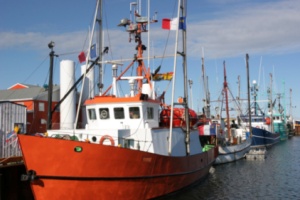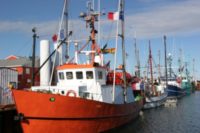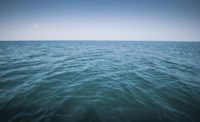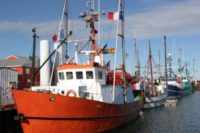 Research conducted by the federally-funded National Institute for Occupational Safety and Health (NIOSH) has helped to reduce fatalities among commercial fisherman by 42 percent.
Research conducted by the federally-funded National Institute for Occupational Safety and Health (NIOSH) has helped to reduce fatalities among commercial fisherman by 42 percent.
A new NIOSH report notes that the institute began working with industry partners back in 1990. Commercial fishing has long been known as the deadliest occupation, with workers subjected to brutal environmental conditions, slip/trip hazards, contact injuries from fishing gear entanglement, vessel losses and falls overboard. From 2000-2010 the fatality rate for commercial fishermen (fishers) was 124 per 100,000 compared to 4 per 100,000 for all other occupations. The two leading causes of death are vessel disasters (51%) and falls overboard (31%). Of the 170 man overboard fatalities between 2000 and 2010, none of the victims were wearing a personal flotation device (PFD).
NIOSH first focused on fishery-specific hazards such as vessel overloading in the crab fleet, then expanded its research scope to identify specific regional hazards for the rest of the country by collecting risk factor information for fatalities and creating the Commercial Fishing Incident Database. Among its efforts: a 2008 personal flotation device (PFD) study with over 400 fishermen aimed at identifying PFDs that are comfortable to work in for several gear types.
NIOSH was invited by the National Transportation Safety Board (NTSB) to participate in the Fishing Vessel Safety Forum held in Washington, DC in 2010. The NTSB used NIOSH research presented during the forum to develop recommendations for improving commercial fishing safety. The recommendations address practices to decrease fatalities due to the two leading causes of death among fishermen as identified by NIOSH research: vessel loss from instability and fatalities from man overboard events.
The NTSB recommendations to the US Coast Guard include the requirement for training in stability for vessel owners and skippers, and mandatory use of flotation aids for workers while on deck. Skippers and crew are also encouraged to be trained in man overboard recovery techniques and show certification in these areas prior to each season.
NIOSH says it continues to work with industry, safety personnel, US Coast Guard, and policy makers to improve occupational safety for commercial fishermen. Ongoing efforts include collection and analysis of nationwide fatality data, development and evaluation of engineering interventions to prevent vessel loss from downflooding and instability, and communication efforts to encourage use of PFDs while working on deck.
NIOSH research put to good use in commercial fishing industry



